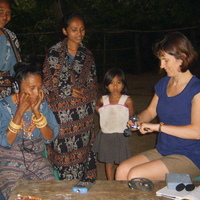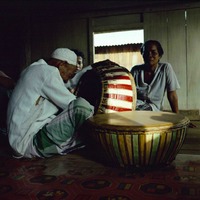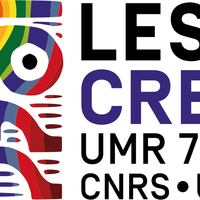(Bima) Three songs with violin
Item
-
Archivist's Original Title
en
(Bima) Three songs with violin
fr
(Bima) Trois chants accompagnés au violon
id
(Bima) Tiga lagu diiringi biola
-
Original description
en
Field recordings made in Sumbawa, Indonesia, in 1992 by D. Rappoport and J. Simonnot.
fr
Enregistrements sonores inédits réalisés par Dana Rappoport et Joséphine Simonnot du 18 au 24 septembre 1992, en Indonésie (Sumbawa).
id
Rekaman yang dibuat oleh Dana Rappoport dan Joséphine Simonnot dari tanggal 18 hingga 24 September 1992, di Indonesia (Sumbawa).
-
Recording date of the original material
-
Place of the cultural origin
-
Recording place
en
Sumbawa, Kabupaten Bima, Kecamatan Wera, Kampung Tawali
-
Comment
en
Recorded in a house on stilts in the courtyard of the Bima raja, rumah Pa' Pawan. The violin player is Jakariah, part of the La Mbila organization, a polyinstrumentalist who has already left for Jakarta. The violin's tuning is E A D G. The player is not flexible, but he plays with energy and accuracy, identical to the violins of Sengkang (Sulawessi). The singing is a little weak. The violin is said to have been brought by the Portuguese in the 17th century. The violin is held on the foot. Singing and violin by a single musician, Pantun nasehat (moral advice). The song links Dali, Ntoko Tambara (sad) and Obi Mbolo (wedding song). Ornamentation, glissandi. The violin announces the note of the song.
fr
Enregistré dans une maison sur pilotis de la cour du raja de Bima, rumah Pa' Pawan. Le joueur de violon se nomme Jakariah, fait partie de l'organisation La Mbila, polyinstrumentiste déjà parti à Jakarta. L'accord du violon est mi la ré sol. Le joueur n'est pas souple mais il joue juste et avec énergie, identique aux violons de Sengkang (Sulawesi). Le chant est un peu faible. Le violon aurait été apporté par les Portugais au XVIIème. Le violon est tenu sur le pied. Chant et violon par un seul musicien,. Pantun nasehat (conseils moraux). Le chant enchaîne Dali, Ntoko Tambara (triste) et Obi Mbolo (chant de mariage). Ornementation, glissandi. Le violon annonce la note du chant.
id
Direkam di sebuah rumah panggung di halaman rumah raja Bima, rumah Pa' Pawan. Pemain biola adalah Jakariah, seorang anggota organisasi La Mbila dan seorang pemain poliinstrumentalis yang telah pergi ke Jakarta. Laras biola tersebut adalah E A D G. Pemain biola ini tidak luwes, namun ia bermain dengan penuh energi dan ketepatan, identik dengan biola-biola di Sengkang (Sulawesi). Nyanyiannya sedikit lemah. Biola ini diperkirakan dibawa ke sini oleh Portugis pada abad ke-17. Biola dipegang dengan menggunakan kaki.
-
Name of original Collection
en
Indonesia, Sumbawa, 1992. D. Rappoport, J. Simonnot
-
Collection source citation
-
History of ownership
en
Archived at CREM, CNRS, in 2011 by D. Rappoport and J. Simonnot
-
Holding Institution of Original Materials
-
Copyright Notice
For any use, please contact the CREM-LESC (CNRS, Nanterre University, France): crem.lesc[at]cnrs.fr, see information at https://archives.crem-cnrs.fr
-
Preservation State of Physical Object
-
Original item number
en
CNRSMH_I_2011_014_006_08
-
SEAH Identifier
en
SEAH_CNRSMH_I_2011_014_006_08
 CNRSMH_I_2011_014_006_08
CNRSMH_I_2011_014_006_08




